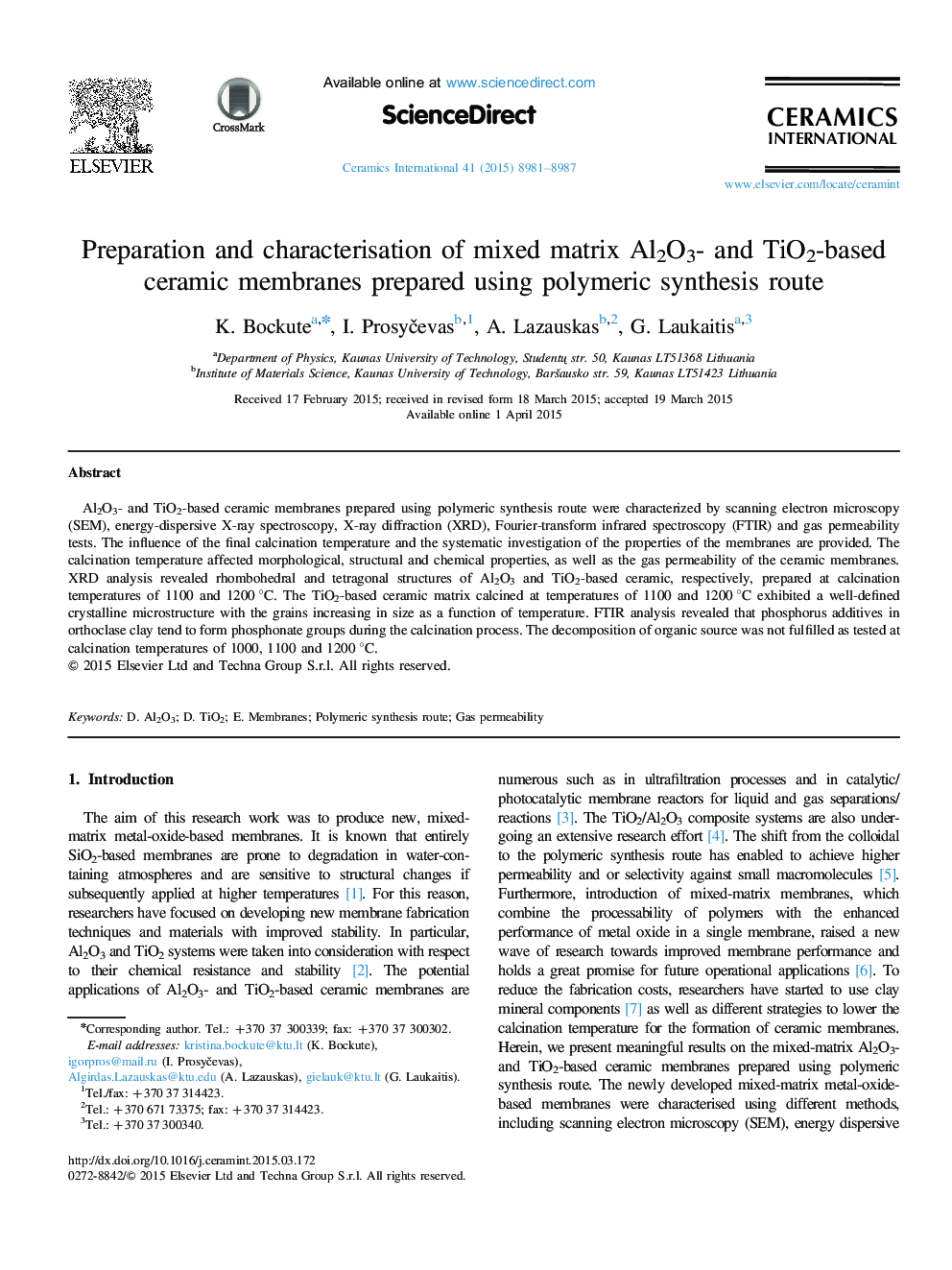| Article ID | Journal | Published Year | Pages | File Type |
|---|---|---|---|---|
| 10624660 | Ceramics International | 2015 | 7 Pages |
Abstract
Al2O3- and TiO2-based ceramic membranes prepared using polymeric synthesis route were characterized by scanning electron microscopy (SEM), energy-dispersive X-ray spectroscopy, X-ray diffraction (XRD), Fourier-transform infrared spectroscopy (FTIR) and gas permeability tests. The influence of the final calcination temperature and the systematic investigation of the properties of the membranes are provided. The calcination temperature affected morphological, structural and chemical properties, as well as the gas permeability of the ceramic membranes. XRD analysis revealed rhombohedral and tetragonal structures of Al2O3 and TiO2-based ceramic, respectively, prepared at calcination temperatures of 1100 and 1200 °C. The TiO2-based ceramic matrix calcined at temperatures of 1100 and 1200 °C exhibited a well-defined crystalline microstructure with the grains increasing in size as a function of temperature. FTIR analysis revealed that phosphorus additives in orthoclase clay tend to form phosphonate groups during the calcination process. The decomposition of organic source was not fulfilled as tested at calcination temperatures of 1000, 1100 and 1200 °C.
Related Topics
Physical Sciences and Engineering
Materials Science
Ceramics and Composites
Authors
K. Bockute, I. ProsyÄevas, A. Lazauskas, G. Laukaitis,
